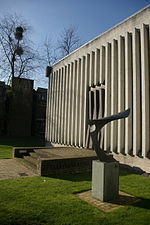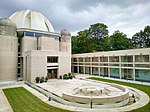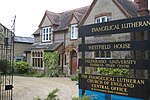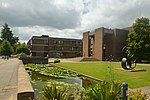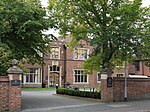Fitzwilliam College, Cambridge

Fitzwilliam College is a constituent college of the University of Cambridge.The college traces its origins back to 1869 and the foundation of the Non-Collegiate Students Board, a venture intended to offer academically excellent students of all backgrounds a chance to study at the university. The institution was originally based at Fitzwilliam Hall (later renamed Fitzwilliam House), opposite the Fitzwilliam Museum in south-west Cambridge. Having moved to its present site in the north of the city, Fitzwilliam attained collegiate status in 1966. Female undergraduates were first admitted in 1978, around the time most colleges were first admitting women. Fitzwilliam is now home to around 475 undergraduates, 500 graduate students and 90 fellows. By overall student numbers, it is the seventh-largest college in Cambridge as of 2018/19. Notable alumni of Fitzwilliam College include six Nobel laureates, a large number of prominent academics, public officials, businesspeople, clergy and athletes, three heads of state or government, one current UK Supreme Court Justice, and a significant number of political figures including a former Liberal Democrats leader, a former Chancellor of the Exchequer, and the current and former Commissioners of the Metropolitan Police.
Excerpt from the Wikipedia article Fitzwilliam College, Cambridge (License: CC BY-SA 3.0, Authors, Images).Fitzwilliam College, Cambridge
Storey's Way, Cambridge Eddington
Geographical coordinates (GPS) Address Website External links Nearby Places Show on map
Geographical coordinates (GPS)
| Latitude | Longitude |
|---|---|
| N 52.21447 ° | E 0.10489 ° |
Address
Fitzwilliam College (University of Cambridge)
Storey's Way
CB3 0DG Cambridge, Eddington
England, United Kingdom
Open on Google Maps

